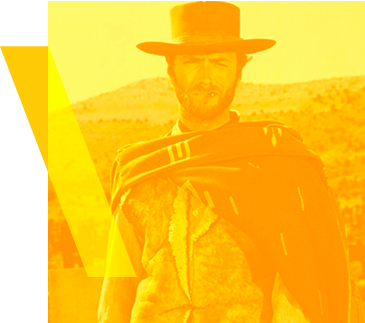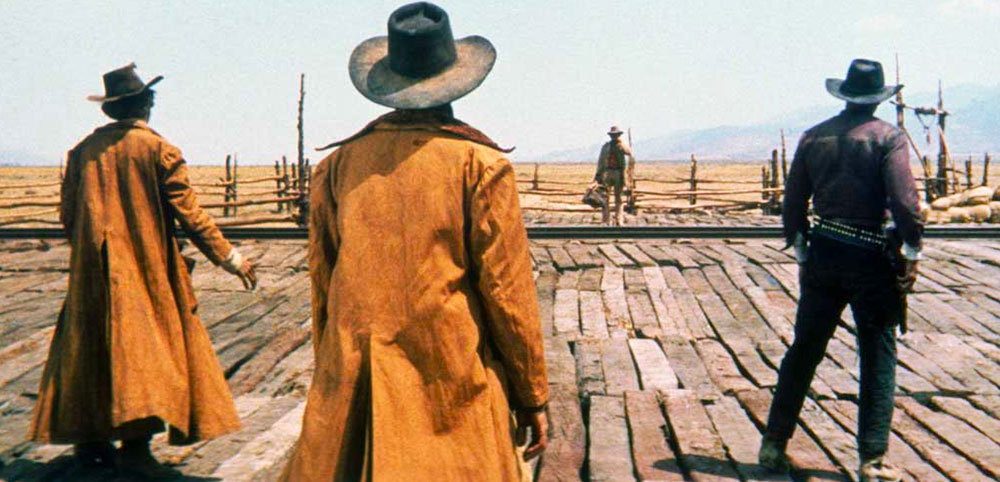Once upon a time… Sergio Leone
For a handful of Spaghettis
The French Cinematheque dedicates an exhibition and a retrospective to Sergio Leone. The king of the spaghetti western shunned by critics in his day and adulated by three generations of filmmakers since. Explanations.
By Bruno Icher

The Cinémathèque Française (French film library) opens its 2018 season with the exhibition Once Upon a Time … Sergio Leone, a declaration of love for a popular cinema. The bearded maestro had already been received at the Cinémathèque in 1986.
”Fifty years after the first westerns of Sergio Leone, the filmmaker will be in everyone's mind in the fall of 2018
But this time, the tribute is solemn, enthusiastic and promised a success of attendance. The director Frederic Bonnaud insisted on the strong link which united the films of Leone to the French public in his introductory speech, on the occasion of the opening on October 8th. Recalling that Once Upon a Time in the West was once in the West had been a triumph in France (10 million admissions in 1968) while it had been shunned by an Italian public, probably a little stuffed spaghetti westerns more or less mediocre, but also in the United States, late in the ignition in this instance.
However, this enthusiasm in French cinemas was, at the end of the 1960s, accompanied by a nearly complete critical disavowal. In newspapers and magazines, harsh words have been written (including the recurring “crook”) to describe the authority with which Leone has appropriated the codes of the western, his favorite universe. Until accusing him of having completed for good the kind, yet moribund for years. It was a bit hasty. On one hand because Leone, as the exhibition shows, passionately adored the western, to the point of having been a fan of Fumetti, these four-penny comics of post-war Italy, and he sees evil in him his Machiavellian gravedigger.
On the other hand because the western did not wait for Leone to begin his agony. Almost at the same time, Sam Peckinpah reaches the peaks of the “twilight” sub-gender with The Wild Bunch. Placing himself in the lineage of the most melancholy of the John Ford (Cheyenne Autumn), or Delmer Daves (The Broken Arrow) who had laid the foundation for an examination of conscience of America. An examination that would later find its climax with the protesters Ralph Nelson’s Soldier Blue or Arthur Penn’s Little Big Man, both released in 1970. All the myths of the conquest of the West were shattered by the harsh historical reality. The proud pioneers have domesticated the wild West, certainly, but at the cost of slavery as the economic system and the genocide of the Indian nations as ideological horizon.
As the exhibition shows, Leone, he is absolutely not in this logic of denunciation. He chose the western which, child and teenager, excited him to the highest degree. Especially with a pater director, Roberto Roberti, pseudonym of Vincenzo Leone, pioneer of western Italy (Indian Vampire, 1913), his path seemed all traced. The work of the teams of the Cinémathèque and the curator of the exhibition, Gianluca Farinelli, guru and patron of the Bologna festival, is therefore a delightful and remarkably rich journey in the work of Leone. It shows the origins of his art (quotations from the filmmaker’s favorite artists, among them the painters De Chirico or Degas) and his sources of cinematic inspiration, including a great parallel montage of Yojimbo (1961) by Kurosawa, a shock of youth for Leone, and his A Fistful of Dollars (1964), demonstrating how cinematographic art feeds itself from one director to another, across borders and languages.
The work is so convincing, with the prescribed dose of fetishism inherent in the exercise (the books of the library of Leone, the costumes worn by the actors, various objects of his office …), that the exhibition makes you want to explore the vast continent of Leone’s legacy of cinema from the 1980’s to today. It may be the subject of another exhibition, but it would measure – at least as much as the examination of the genesis of his work – the impact that his films have had, and still have, on contemporary authors.
In a rather transparent way, characters such as Nicolas Winding Refn’s Driver (Drive, 2011), Robert Rodriguez’s Mariachi (El Mariachi, 1993), George Miller’s Mad Max (Mad Max, 1979), Snake Plissken from John Carpenter (Escape from New York, released in 1981), James Cameron’s Terminator, and even the Coen Brothers’ Anton Chigurh (No Country for Old Men, 2007), all have something to do with the Men with no Name, ruthless the dumb man, which Clint Eastwood embodied in the Dollar’s Trilogy (A Fistful of Dollars, For a few Dollars more, The good, the bad and the Ugly). Eastwood himself, emerged from relative anonymity thanks to the triumph of Leone’s films, has long surfed on this iconic fascination of which he became the repository at least as much as its creator (from Dirty Harry to Gran Torino, via Pale Rider). Straight after, we can cite the mantle of Neo in Matrix (Lana and Lilly Wachowski, 2000) reminiscent of the duster of Once upon a time in the West. Just like the James Bond played by Daniel Craig played a lot on a uprising of the character, close to that of those of Leone. As for Quentin Tarantino, the heartless lover of this cinema and successor assumed, each of his creatures, stylish gangsters of Reservoir Dogs to the social cases of The Hatefull Eight, through half of the killers of Kill Bill, could have been included in the distribution of Leone movies.
It is also fascinating to note that the films of the master of Western Spaghetti had, instantly after their release, a massive and planetary impact. For example, several films from Hong Kong studio Shaw Brothers, in its golden age of the late 1960’s, have happily drawn from Leone’s motives. The director Chang Cheh in particular (Golden Swallow, Return of the One-Armed Swordsman…), built a package of his staged on the model “leonien” starting with the duels, one against ten, with increasing tension by playing alternating wide and close shots preceding a brief and brutal outburst of violence.
Fifty years after the first westerns of Sergio Leone, the filmmaker will be in everyone’s minds in this autumn of 2018, thanks to the exhibition and the retrospective of the French Cinémathèque, but also thanks to the release, at the end of October, of the game Red Dead Redemption 2 signed by the studio RockStar Games (creator of the famous saga of the GTA). In this colossal fresco, the character piloted by the player will be able to walk in a West more wild than that, where the mountain grizzlies, the serpents of the desert and the highwaymen must now cohabit with the railway and the factories. . The first images, abundantly broadcast on the net, strangely remind something …




